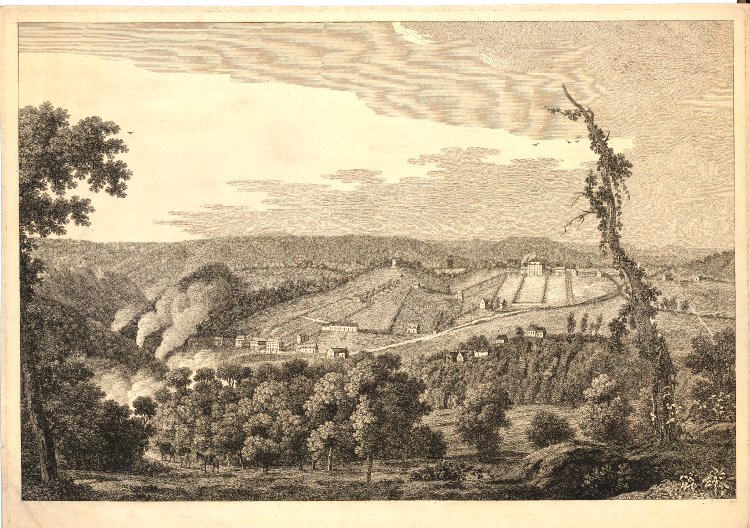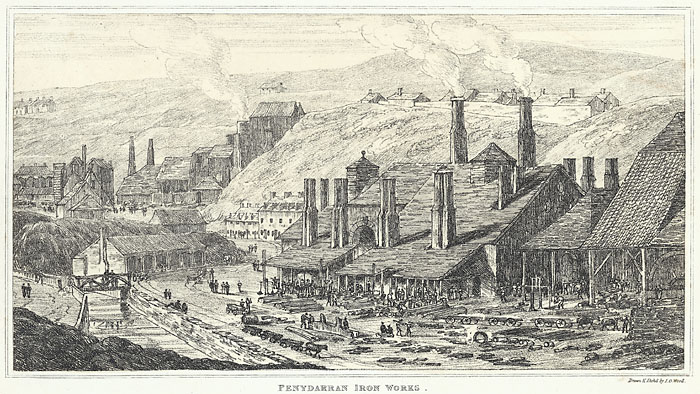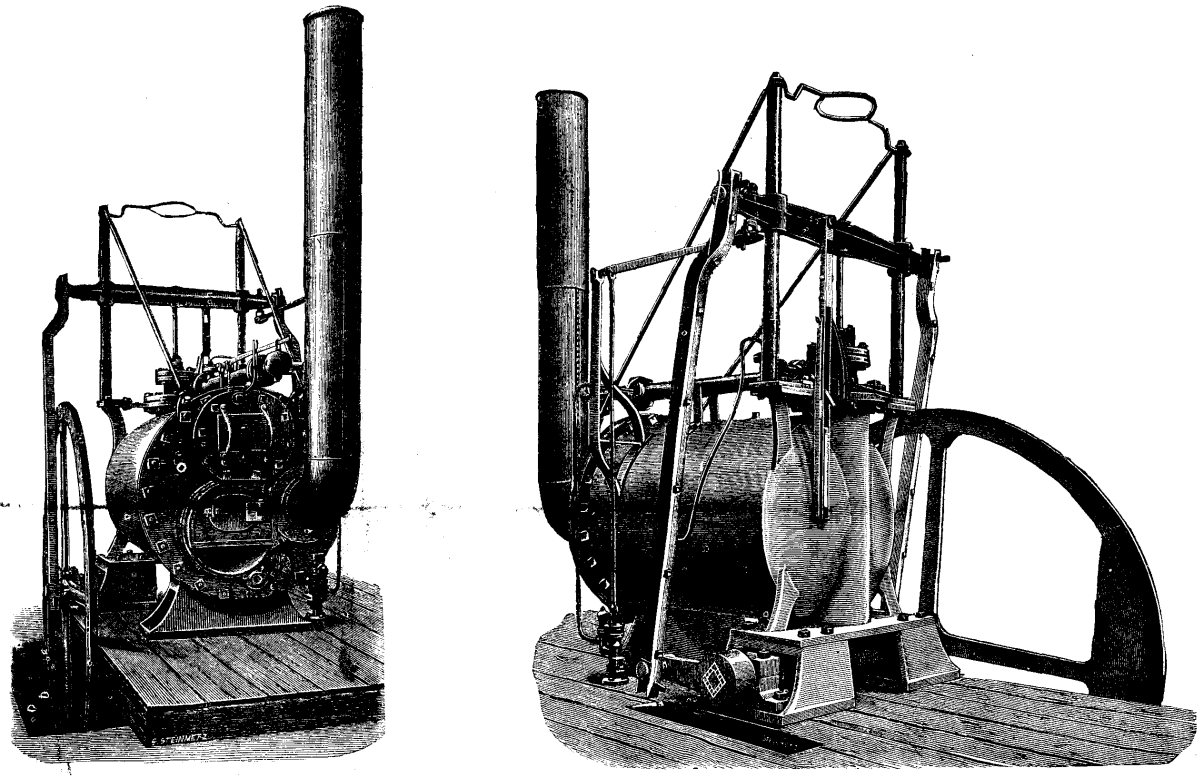|
Taff Vale Railway
The Taff Vale Railway (TVR) was a standard gauge railway in South Wales, built by the Taff Vale Railway Company to serve the iron and coal industries around Merthyr Tydfil and to connect them with docks in Cardiff. It was opened in stages in 1840 and 1841. In the railway's first years, the coal mining industries expanded considerably and branches were soon opened in the Rhondda valleys and the Cynon Valley. The conveyance of coal for export and for transport away from South Wales began to dominate and the docks in Cardiff and the approach railway became extremely congested. Alternatives were sought and competing railway companies were encouraged to enter the trade. In the following decades further branch lines were built and the TVR used " motor cars" (steam railway passenger coaches) from 1903 to encourage local passenger travel. From 1922 the TVR was a constituent of the new Great Western Railway (GWR) at the grouping of the railways, imposing its own character on ... [...More Info...] [...Related Items...] OR: [Wikipedia] [Google] [Baidu] |
South Wales
South Wales ( cy, De Cymru) is a loosely defined region of Wales bordered by England to the east and mid Wales to the north. Generally considered to include the historic counties of Glamorgan and Monmouthshire, south Wales extends westwards to include Carmarthenshire and Pembrokeshire. In the western extent, from Swansea westwards, local people would probably recognise that they lived in both south Wales and west Wales. The Brecon Beacons National Park covers about a third of south Wales, containing Pen y Fan, the highest British mountain south of Cadair Idris in Snowdonia. A point of some discussion is whether the first element of the name should be capitalised: 'south Wales' or 'South Wales'. As the name is a geographical expression rather than a specific area with well-defined borders, style guides such as those of the BBC and ''The Guardian'' use the form 'south Wales'. In a more authoritative style guide, the Welsh Government, in their international gateway website, ... [...More Info...] [...Related Items...] OR: [Wikipedia] [Google] [Baidu] |
Limestone
Limestone ( calcium carbonate ) is a type of carbonate sedimentary rock which is the main source of the material lime. It is composed mostly of the minerals calcite and aragonite, which are different crystal forms of . Limestone forms when these minerals precipitate out of water containing dissolved calcium. This can take place through both biological and nonbiological processes, though biological processes, such as the accumulation of corals and shells in the sea, have likely been more important for the last 540 million years. Limestone often contains fossils which provide scientists with information on ancient environments and on the evolution of life. About 20% to 25% of sedimentary rock is carbonate rock, and most of this is limestone. The remaining carbonate rock is mostly dolomite, a closely related rock, which contains a high percentage of the mineral dolomite, . ''Magnesian limestone'' is an obsolete and poorly-defined term used variously for dolomite, for limes ... [...More Info...] [...Related Items...] OR: [Wikipedia] [Google] [Baidu] |
Coalbrookdale
Coalbrookdale is a village in the Ironbridge Gorge in Shropshire, England, containing a settlement of great significance in the history of iron ore smelting. It lies within the civil parish called the Gorge. This is where iron ore was first smelted by Abraham Darby using easily mined "coking coal". The coal was drawn from drift mines in the sides of the valley. As it contained far fewer impurities than normal coal, the iron it produced was of a superior quality. Along with many other industrial developments that were going on in other parts of the country, this discovery was a major factor in the growing industrialisation of Britain, which was to become known as the Industrial Revolution. Today, Coalbrookdale is home to the Ironbridge Institute, a partnership between the University of Birmingham and the Ironbridge Gorge Museum Trust offering postgraduate and professional development courses in heritage. Before Abraham Darby Before the Dissolution of the Monasteries, Madeley ... [...More Info...] [...Related Items...] OR: [Wikipedia] [Google] [Baidu] |
Penydarren Ironworks
Penydarren Ironworks was the fourth of the great ironworks established at Merthyr Tydfil in South Wales. Built in 1784 by the brothers Samuel Homfray, Jeremiah Homfray, and Thomas Homfray, all sons of Francis Homfray of Stourbridge. Their father, Francis, for a time managed a nail warehouse there for Ambrose Crowley. Most of the family were involved in trade as ironmasters or ironmongers (in this context meaning a manufacturer of iron goods). Samuel built Penydarren House on the opposite bank of the River Taf, as a home for the family locally. Because the owners of the Cyfarthfa Ironworks dominated the management of Glamorganshire Canal, the other Merthyr Tydfil ironworks built a tramroad to Abercynon, bypassing the upper sections of the canal. This "Penydarren Tramroad" (more correctly, the Merthyr Tramroad) was used for a trial of the first railway steam locomotive, built by Richard Trevithick. This successfully hauled wagons but was so heavy that it broke many rails. The ... [...More Info...] [...Related Items...] OR: [Wikipedia] [Google] [Baidu] |
Richard Trevithick
Richard Trevithick (13 April 1771 – 22 April 1833) was a British inventor and mining engineer. The son of a mining captain, and born in the mining heartland of Cornwall, Trevithick was immersed in mining and engineering from an early age. He was an early pioneer of steam-powered road and rail transport, and his most significant contributions were the development of the first high-pressure steam engine and the first working railway steam locomotive. The world's first locomotive-hauled railway journey took place on 21 February 1804, when Trevithick's unnamed steam locomotive hauled a train along the tramway of the Penydarren Ironworks, in Merthyr Tydfil, Wales. Turning his interests abroad Trevithick also worked as a mining consultant in Peru and later explored parts of Costa Rica. Throughout his professional career he went through many ups and downs and at one point faced financial ruin, also suffering from the strong rivalry of many mining and steam engineers of the day. Durin ... [...More Info...] [...Related Items...] OR: [Wikipedia] [Google] [Baidu] |
Merthyr Tramroad
The Merthyr Tramroad (sometimes referred to as the Penydarren Tramroad due to its use by Trevithick's locomotive built at that ironworks) was a long line that opened in 1802, connecting the private lines belonging to the Dowlais and Penydarren Ironworks with the Glamorganshire Canal at Abercynon, also serving the Plymouth Ironworks along the way. Famous as the line on which Richard Trevithick's experimental locomotive hauled the first train to carry a load (of 10 tons of iron). It was largely superseded when the Taff Vale Railway opened in 1841 and sections gradually went out of use over the two decades from about 1851. History The four principal ironworks at Merthyr Tydfil were Dowlais (built 1759), Plymouth (built 1763), Cyfarthfa (built 1765) and Penydarren (built 1784). Initially the output of these ironworks was carried by packhorse or on carts 25 miles to Cardiff. In 1794 Cyfarthfa works was linked to Cardiff by the Glamorganshire Canal, the other three ironworks were ... [...More Info...] [...Related Items...] OR: [Wikipedia] [Google] [Baidu] |
Glamorganshire Canal
The Glamorganshire Canal in South Wales, UK, was begun in 1790. It ran along the valley of the River Taff from Merthyr Tydfil to the sea at Cardiff. The final section of canal was closed in 1951. History Construction started in 1790; being watched over by the wealthy ironmasters of Merthyr Tydfil, including Richard Crawshay of the Cyfarthfa Ironworks, the canal was thought up as a solution to the issue of transporting the goods (iron ore, coal and limestone) from the valleys to Cardiff, where they would be shipped around the world. Thomas Dadford was hired to inspect and plan a route for the canal and, with support from Lord Cardiff, the canal was authorised by Parliament on 9 June 1790. Almost £90,000 was raised in preparation of constructing the canal and would be linked to any works within four miles of the canal, through branch canals and linking railways. However, during the few miles approaching Cardiff, the canal suffered from severe water shortages, resulting in goods ... [...More Info...] [...Related Items...] OR: [Wikipedia] [Google] [Baidu] |
Plateway
A plateway is an early kind of railway, tramway or wagonway, where the rails are made from cast iron. They were mainly used for about 50 years up to 1830, though some continued later. Plateways consisted of "L"-shaped rails, where the flange on the rail guides the wheels, in contrast to edgeways, where flanges on the wheels guide them along the track. Plateways were originally horsedrawn but, later on, cable haulage and small locomotives were sometimes used. The plates of the plateway were made of cast iron, often fabricated by the ironworks that were their users. On most lines, that system was replaced by rolled wrought iron (and later steel) "edge rails" which, along with realignment to increase the radius of curves, converted them into modern railways, better suited to locomotive operation. Plateways were particularly favoured in South Wales and the Forest of Dean, in some cases replacing existing edge rails. Other notable plateways included the Hay Railway, the Glouces ... [...More Info...] [...Related Items...] OR: [Wikipedia] [Google] [Baidu] |
Tramroad
A plateway is an early kind of railway, tramway or wagonway, where the rails are made from cast iron. They were mainly used for about 50 years up to 1830, though some continued later. Plateways consisted of "L"-shaped rails, where the flange on the rail guides the wheels, in contrast to edgeways, where flanges on the wheels guide them along the track. Plateways were originally horsedrawn but, later on, cable haulage and small locomotives were sometimes used. The plates of the plateway were made of cast iron, often fabricated by the ironworks that were their users. On most lines, that system was replaced by rolled wrought iron (and later steel) "edge rails" which, along with realignment to increase the radius of curves, converted them into modern railways, better suited to locomotive operation. Plateways were particularly favoured in South Wales and the Forest of Dean, in some cases replacing existing edge rails. Other notable plateways included the Hay Railway, the Glouces ... [...More Info...] [...Related Items...] OR: [Wikipedia] [Google] [Baidu] |
Mule
The mule is a domestic equine hybrid between a donkey and a horse. It is the offspring of a male donkey (a jack) and a female horse (a mare). The horse and the donkey are different species, with different numbers of chromosomes; of the two possible first-generation hybrids between them, the mule is easier to obtain and more common than the hinny, which is the offspring of a female donkey (a jenny) and a male horse (a stallion). Mules vary widely in size, and may be of any color. They are more patient, hardier and longer-lived than horses, and are perceived as less obstinate and more intelligent than donkeys. Terminology A female mule that has oestrus cycles, and which could thus in theory carry a foetus, is called a "molly" or "Molly mule", though the term is sometimes used to refer to female mules in general. A male mule is properly called a "horse mule", though often called a "john mule", which is the correct term for a gelded mule. A young male mule is called a "mule co ... [...More Info...] [...Related Items...] OR: [Wikipedia] [Google] [Baidu] |
Dowlais Ironworks
The Dowlais Ironworks was a major ironworks and steelworks located at Dowlais near Merthyr Tydfil, in Wales. Founded in the 18th century, it operated until the end of the 20th, at one time in the 19th century being the largest steel producer in the UK. Dowlais Ironworks were the first business to license the Bessemer process, using it to produce steel in 1865. Dowlais Ironworks was one of the four principal ironworks in Merthyr. The other three were Cyfarthfa, Plymouth, and Penydarren Ironworks. In 1936 Dowlais played a part in the events leading to the abdication crisis of Edward VIII, when the King visited the steelworks and was reported as saying that "these works brought these men here. Something must be done to get them back to work", a statement which was seen as political interference. The steelworks finally closed in 1987. Beginnings (1759–1807) The works was founded as a partnership on 19 September 1759. There were nine original partners including Thomas Lewis and ... [...More Info...] [...Related Items...] OR: [Wikipedia] [Google] [Baidu] |
Plymouth Ironworks
The Plymouth Ironworks was a major 18th century and 19th century ironworks located on land leased from the Earl of Plymouth at Merthyr Tydfil, in South Wales. The metal produced was considered to be the finest in South Wales. The Ironworks was established by John Guest and Isaac Wilkinson in 1763, but the venture was unsuccessful and transferred to Anthony Bacon in 1765. On his death in 1788, Richard Hill became the owner. Anthony Hill, a later owner, adopted the Bessemer process The Bessemer process was the first inexpensive industrial process for the mass production of steel from molten pig iron before the development of the open hearth furnace. The key principle is steelmaking, removal of impurities from the iron by ox .... On his death in 1862, the company was taken over by Fothergill, Hankey and Bateman until its closure in 1882. References Ironworks and steelworks in Wales 1763 establishments in Great Britain British companies established in 1763 {{Wales- ... [...More Info...] [...Related Items...] OR: [Wikipedia] [Google] [Baidu] |







.jpg)

